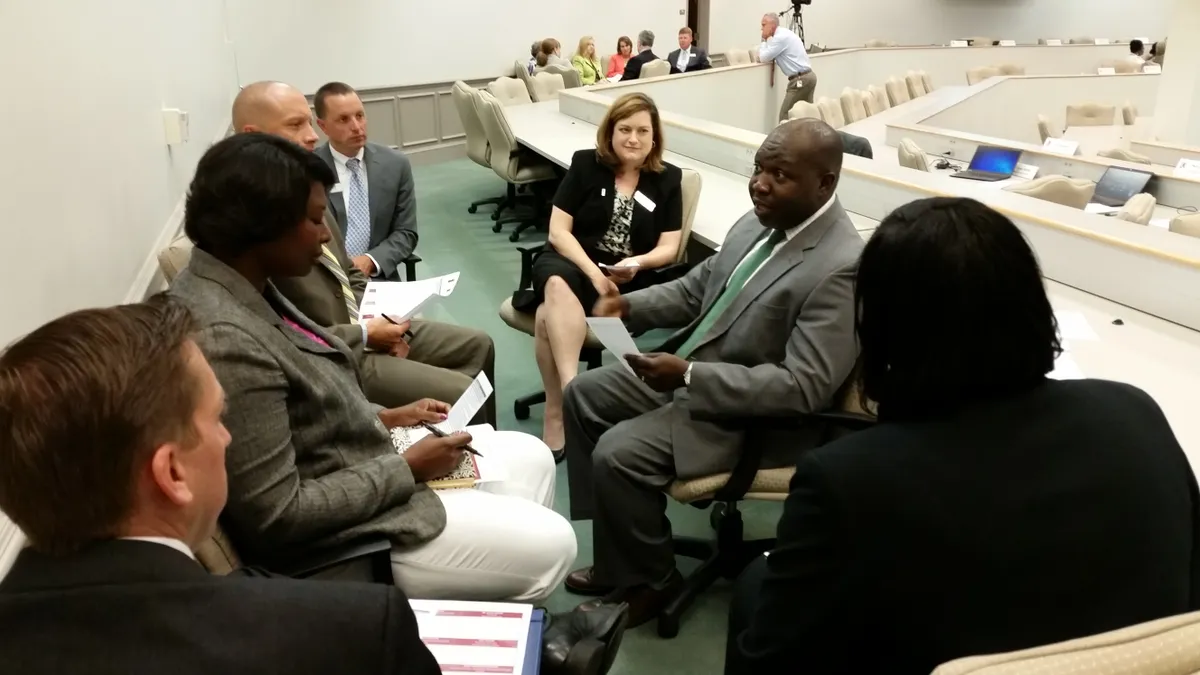Dive Brief:
- A new report based on a survey conducted by the Learning Policy Institute and the National Association of Secondary School Principals finds 42% of principals are considering leaving their position, citing heavy workloads, low compensation and lack of evaluation practices, with the percent of principals planning a move higher for those in high-poverty and rural schools.
- Principals surveyed also said they lack decision-making authority and access to professional development and learning opportunities. Though teachers make the biggest impact on students, the respondents said principals are also important because they define culture and vision, make hiring decisions and plan.
- A school leader’s departure affects students and teachers, and searches for replacements cost time and money. The report suggests, among other things, districts should ease principals’ workloads by fully staffing administrative teams, pay them competitive salaries and provide professional development opportunities.
Dive Insight:
The report is the final installment in a four-part research project by LPI and NASSP examining the factors that contribute to principal turnover and how to address them. A research brief issued by the organizations last year showed 35% of principals stay at their schools for less than two years, and only 11% stay for more than 10.
One-fifth of principals leave their schools every year, and lack of recognition and low salaries are partially to blame. Teachers and principals earn about 30% less than their peers in similar countries.
But principals who feel inspired and that they are making a difference for their students and their schools tend to stay longer. Also, school leaders say they have to recognize they can’t do it all on a daily basis and that it’s okay to delegate.
More than 27% of principals and 18% of teachers are over the age of 65. In the coronavirus era, schools could face an even greater principal shortage as older principals may opt for an early retirement rather than return to schools over health concerns. The American Enterprise Institute, a right-of-center think tank, recommends schools allow principals to work from home during the continuing health crisis.
Among the LPI and NASSP research's policy suggestions for the local, state and federal levels are:
- Support for evidence-based principal professional development through Title I, Part A funds.
- Support for better working conditions via resources needed to hire adequate administrative staff and student support personnel.
- Appropriate decision-making autonomy through Peer Assistance and Review programs that provide mentors for struggling teachers and due process if a teacher’s practice doesn't improve.
- The creation or expansion of programs that help underwrite the cost of high-quality principal preparation — with conditions like, for example, a commitment to serve in a high-poverty or rural school.
- Adequate and equitable compensation within states and across districts, with additional financial incentives for principals who commit to high-need schools.
- Increased state and federal investments in leader preparation programs and their high-quality professional development.
- Support for local efforts to improve whole child and student supports via sufficient state and federal funding under Title IV, the Student Success and Academic Enrichment Grant program.
A panel led by LPI President and CEO Linda Darling-Hammond and featuring several school leaders is set to discuss the findings in a Thursday afternoon webinar.













